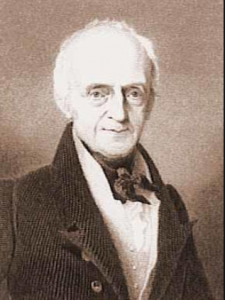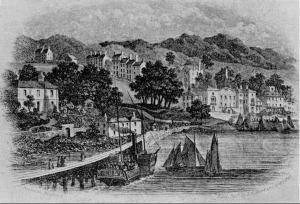William Morton Pitt (1754-1836)
William Morton Pitt
From extracts of his obituary published in The Gentlemen’s Magazine, Volume 159, January to June 1836. Mr. W. Morton Pitt was the eldest and only surviving son of John Pitt (1706-1787) , esq. of Encombe, a Commissioner of Trade and Plantations, Surveyor of Woods and Forests, and M. P. for Wareham and Dorchester. In 1779, Mr. William Morton Pitt was appointed Lieut-Col. of the Dorsetshire Militia. He lived at the mansion-house at Encombe in the Isle of Purbeck, which he inherited from his father. The estate of Kingston was originally bought by his Grandfather George Pitt (1663–1735) in 1734.
William Morton Pitt (1754-1836) a cousin of the Prime Minister William Pitt (the younger) born (1759-1806), was essentially a public man, throughout a long and laborious life, Mr. Pitt had the rare success of obtaining the good will of, and giving satisfaction to, all classes and parties; and whether as an active county magistrate, the duties of which office he fulfilled with zeal, ability and discretion, for upwards of half a century; or in parliament, where he sat for the Poole Constituency 1780-1790 and later the Dorset Constituency 1790-1826. His time and exertions unremittingly devoted to the public good. Nor was his private life less worthy. Beloved by his family, esteemed by his friends, and honoured by all, he passed through life distinguished by the possession of the purest virtues, and by the exercise of a diffusive philanthropy, and extensive practical benevolence.
To encourage industry, and detach the population from smuggling, Mr. Pitt established a manufactory for cordage and sail-cloth, near his domain in the Isle of Purbeck, and he also erected, at his own expense, a manufactory for hats in the gaol at Dorchester. He was likewise one of the first promoters of Sunday schools and addressed in 1789 a public letter to the London Society established for their encouragement, containing a plan for the formation of District Committees and County Societies, in furtherance of their objects. He was also at the expense of printing some statistical tables on the state of the poor, which are given in that work. He published, in 1798, an address to the Landed Interest on the deficiency of Habitations and Fuel for the use of the Poor: and he was the author of several communications to the Bath Agricultural Papers, and Young’s Annals of Agriculture.
Mr. Pitt was twice married. His first wife was Margaret, daughter of John Gambier, esq. Governor of the Bahama Islands, by whom he had an only daughter Sophia, who was married in 1806 to Charles, second and present Earl of Romney, and died in 1812, leaving, issue Charles Viscount Marsham and four daughters.
Mr. Pitt married secondly, in 1815, Grace-Amelia, daughter of Henry Seymer, of Hanford in Dorsetshire, Esq.: this lady’s mother was Griselda, or Grace, daughter of James Kerr, of Kerrsfield, N.B. by Lucy sister to the first Rivers; and she was thus Mr. Pitt’s cousin, twice removed. We believe she survives him, having had issue a son and heir, and other children 13
The Tontine Scheme
Pitt financed the proposed building of 13 houses in Seymer road under the Tontine principle, this was a scheme where shares in the project were sold to subscribers.The first eight subscribers paid £100 each, by August 1831 there were 22 subscribers. By June 1832, three houses were built and ready to be let unfurnished. The property at the top of the hill, No 1, was for 40 guineas, the other two were rented out at 30 guineas. At first it was very difficult to get a customer, but Dr Delamotte took No. 1, the other two were rented by Pitt. By late June 1832, the fourth house was completed and the Swanage Tontine report was submitted to a local committee, it was satisfied because three of the houses were let.
This was not to last for long. In December 1834 some of the subscribers had not paid their fees and lawyers bills were mounting. Pitt volunteered to pay the outstanding balance but when his cheque was cashed Pitt was declared bankrupt 4

